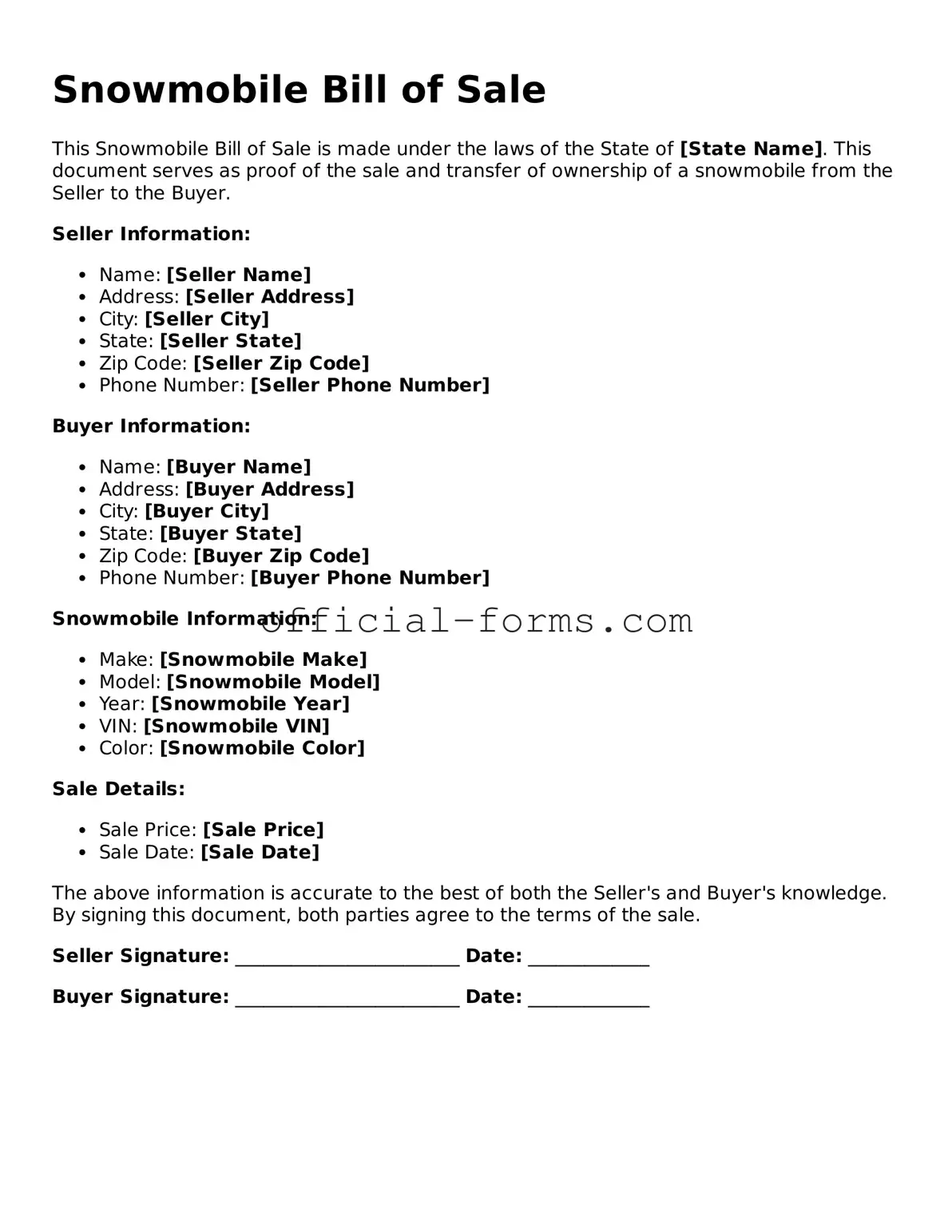Attorney-Verified Snowmobile Bill of Sale Template
The Snowmobile Bill of Sale form is a legal document that records the transfer of ownership of a snowmobile from one party to another. This form serves as proof of the transaction and includes essential details such as the buyer's and seller's information, the snowmobile's description, and the sale price. Properly completing this form can help prevent disputes and ensure a smooth transfer process.
Open My Snowmobile Bill of Sale Now
